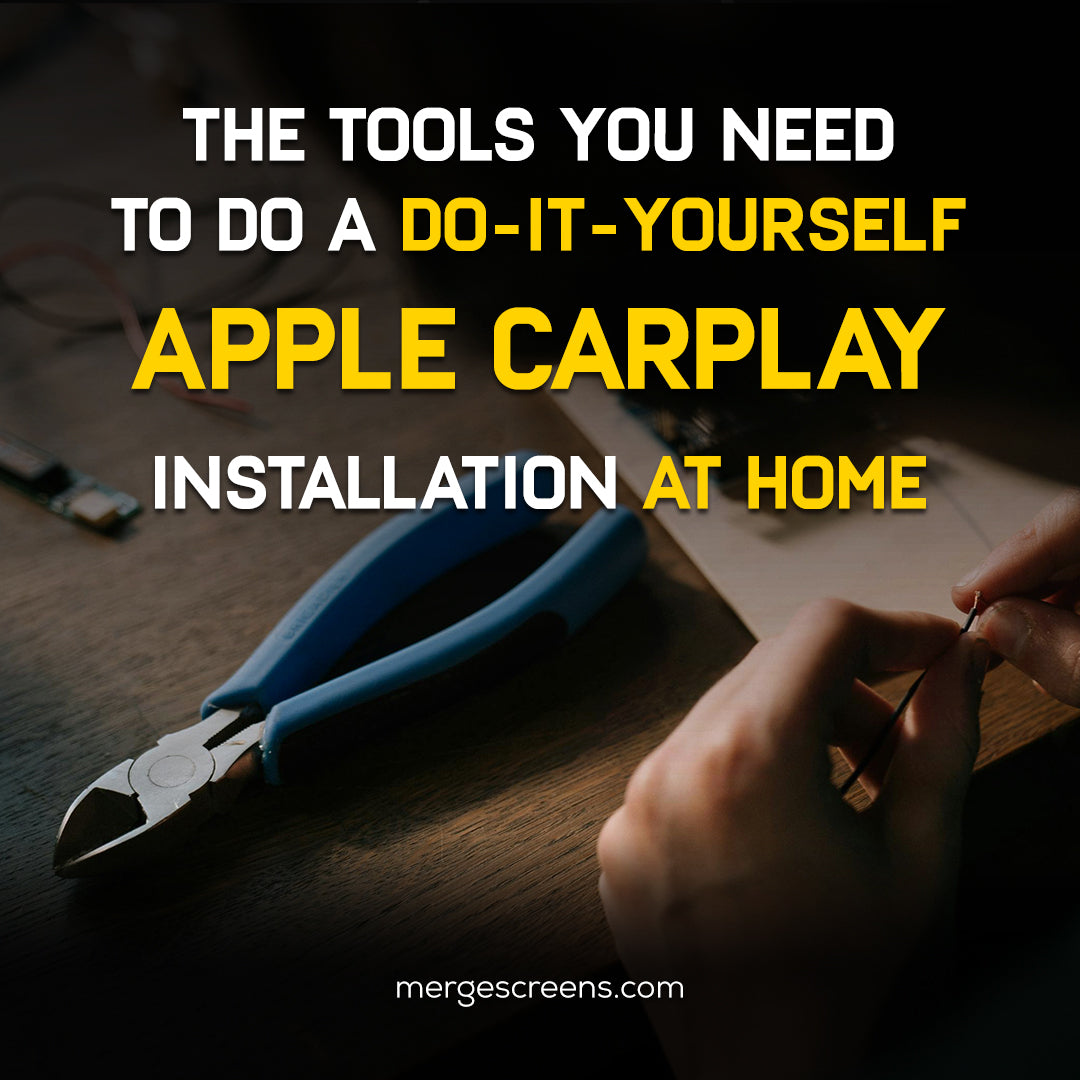Tools You Need to Install Apple CarPlay at Home

Have you ever gotten angry because you were trying to use your phone while driving? Enter Apple CarPlay now your iPhone is on the dashboard and can be accessed in a hands-free way. If your car didn’t come with it, don’t worry. You can set up Apple CarPlay at home if you have the appropriate tools and are willing to do it yourself. This guide walks you through everything—from tools to cost—so you can upgrade your ride without stepping into a shop.
Can You Really Install Apple CarPlay at Home?
Absolutely. If you can use a screwdriver and follow instructions, you’re already halfway there. Most modern vehicles support aftermarket CarPlay head units, and many kits are designed specifically for easy DIY installation. That being said, it's important to know the make, model, and year of your car before you start.
Full List of Tools You’ll Need
Getting the correct tools ready will speed up and make your installation go more smoothly. Here's a breakdown of what you'll need:
Basic Tools
● Phillips and Flathead Screwdrivers
For unscrewing dash panels and removing the stock stereo.
● Trim Removal Tools
Plastic pry tools to safely remove dash panels without damaging them.
● Socket Wrench Set
Useful for loosening mounting bolts behind the dashboard.
Electrical Tools
● Wire Strippers & Crimpers
You'll need these to modify or connect wiring.
● Multimeter
To test voltage and ensure proper connections.
● Electrical Tape & Butt Connectors
For secure, insulated wiring connections.
Specialty Tools
● Dash Panel Tools
Sometimes required for hard-to-reach areas or specific vehicle types.
● Harness Adapter
This connects your car’s wiring to the new head unit without cutting factory wires.
● Heat Gun (Optional)
Helps with shrinking heat-shrink tubing for a clean finish.
Pre-Installation Checklist
Before diving into installation, here’s what you should check off:
Verify Car Compatibility
Make sure your car can get CarPlay improvements by looking up its make and model. Not all older models are a match.
Purchase a Compatible Head Unit
Choose a CarPlay-compatible head unit (like those from Pioneer, Alpine, or mergescreens.com). Some include wireless CarPlay as a bonus.
Download the User Manual
Print or download the installation manual for your stereo and your car. They’ll guide you on wire colors, mounting, and setup.
Backup Vehicle Settings
Take note or photos of radio presets and system settings—some may reset during installation.
Step-by-Step Installation Guide
Here’s the juicy part—actually getting it done.
Step 1: Disconnect the Battery
Safety first! To keep short circuits from happening, unplug the negative battery terminal.
Step 2: Remove the Factory Stereo
Use screwdrivers and trim tools to carefully take off the dash of your car and pull out the OEM audio.
Step 3: Install Mounting Kit and Brackets
Follow your head unit's instruction manual to install the new mounting kit and brackets inside the dash.
Step 4: Connect Wiring Harness and CAN Bus
Plug your harness adapter into your car's system. For advanced features like steering wheel control, connect the CAN Bus decoder.
Step 5: Secure the New CarPlay Unit
Fit your new head unit into place and secure it with screws and brackets.
Step 6: Reconnect Battery and Test
Turn your car on and test everything—audio, touchscreen, Siri, maps, and Bluetooth.
DIY Tips to Make Your Installation Smoother
● Label Your Wires
Saves guesswork during reassembly.
● Keep Screws Organized
A magnetic tray works wonders.
● Watch YouTube Videos
Especially helpful for your specific car model.
Common Mistakes to Avoid
● Skipping the Battery Disconnect
Dangerous and could fry your electronics.
● Forgetting the Harness Adapter
Don't cut factory wires unless you're a wiring wizard.
● Rushing the Job
Take your time—it’s not a race.
How Much Does It Cost to Install CarPlay at Home?
Estimated DIY Cost Breakdown
|
Item |
Estimated Cost |
|
Head Unit (with CarPlay) |
$300 – $600 |
|
Wiring Harness & Kit |
$50 – $150 |
|
Tools (if you don’t already own) |
$50 – $100 |
|
Total |
$400 – $850 |
Comparison to Professional Installation
The labor cost at a pro install business could be between $150 and $300. A DIY installation can save you a chunk if you're up for the challenge.
What to Do If Something Goes Wrong
If the screen doesn’t light up or audio’s not working:
● Double-check connections
● Use a multimeter to verify power
● Revisit installation manuals
● Still stuck? It might be time to get a tech person.
Is It Worth Doing It Yourself?
If you’re handy, patient, and love a good weekend project—yes! You’ll save money and learn a ton. However, if wires make you nervous, hiring a professional may give you peace of mind.
Resources to Help You Succeed
You don’t have to go it alone. There are plenty of step-by-step walkthroughs and communities out there. One in-depth resource is this complete guide to installing CarPlay—packed with visuals and pro tips.
Conclusion
Installing Apple CarPlay at home isn’t rocket science, but it does require preparation, the right tools, and a bit of patience. With this guide, you’re now equipped to tackle the project confidently—and maybe even enjoy the process. Whether you’re upgrading an older car or just want smarter driving, doing it yourself can be both rewarding and cost-effective.
FAQs
1. Can you install Apple CarPlay without swapping out the dashboard?
In most cases, no. You’ll need a CarPlay-compatible head unit unless your vehicle already supports it natively.
2. Do I need to reprogram my car for CarPlay?
Not usually. Most aftermarket units work right away with the appropriate harness.
3. Is Apple CarPlay wireless or wired?
It can be both. Some units support only wired, while others offer wireless CarPlay with Bluetooth and Wi-Fi.
4. Will DIY installation void my warranty?
Modifying your stereo system can affect the warranty. Check with your manufacturer or dealer first.
5. What’s the easiest car model to install CarPlay in?
Cars with double-DIN slots and minimal dashboard electronics (like certain Toyota, Honda, and Ford models) are generally easiest.

